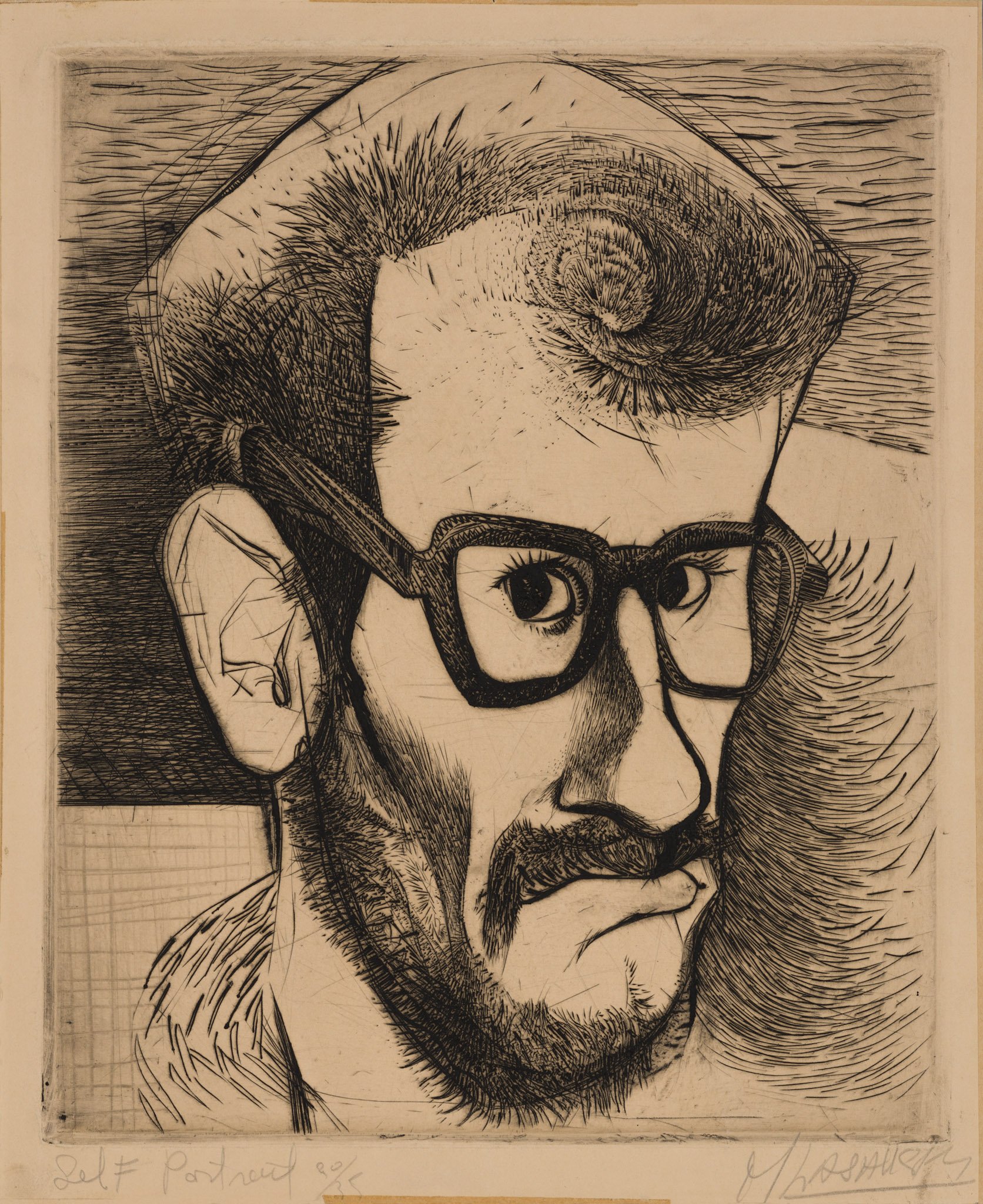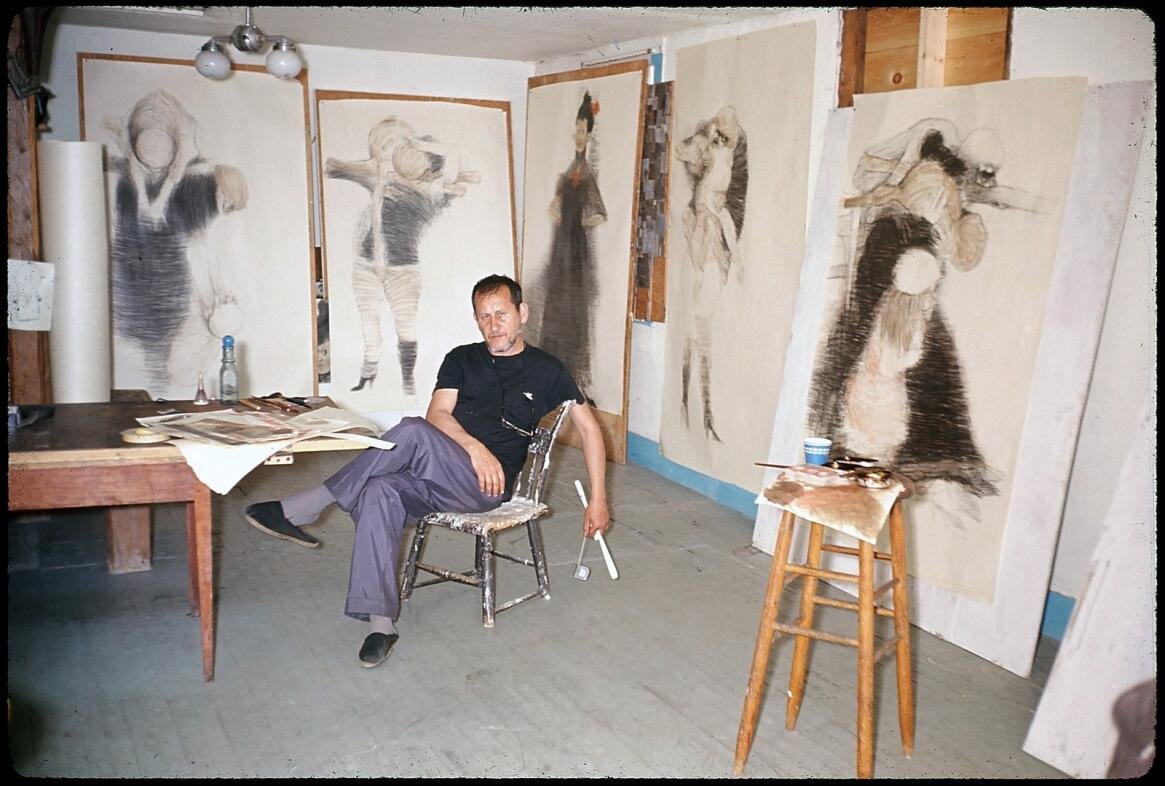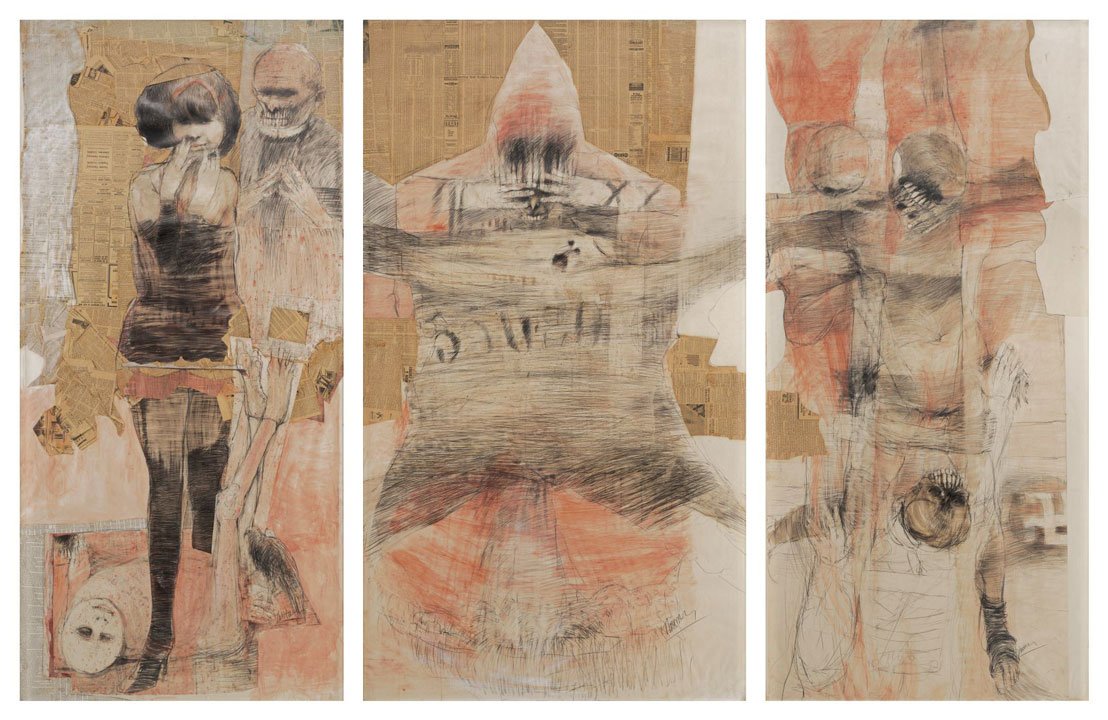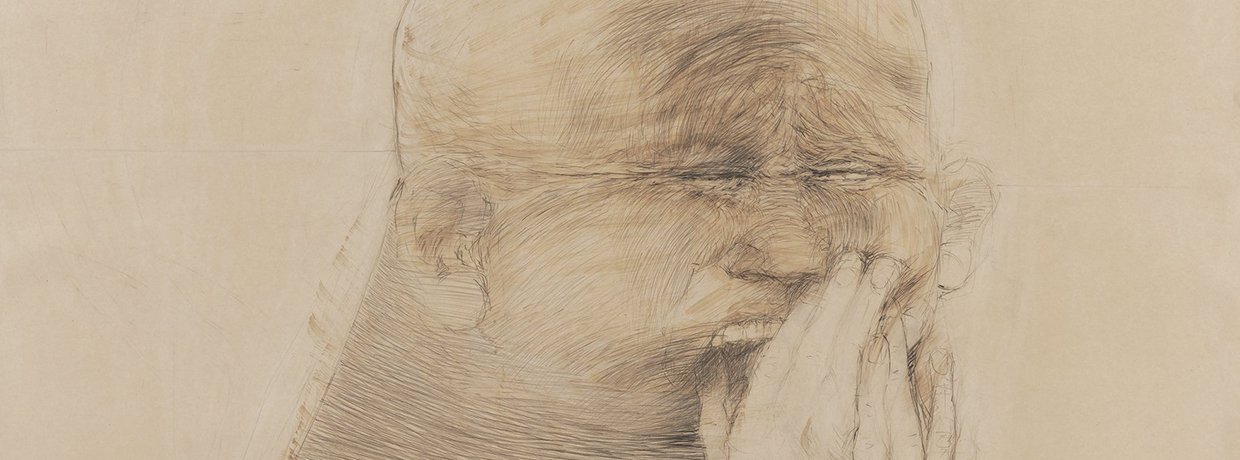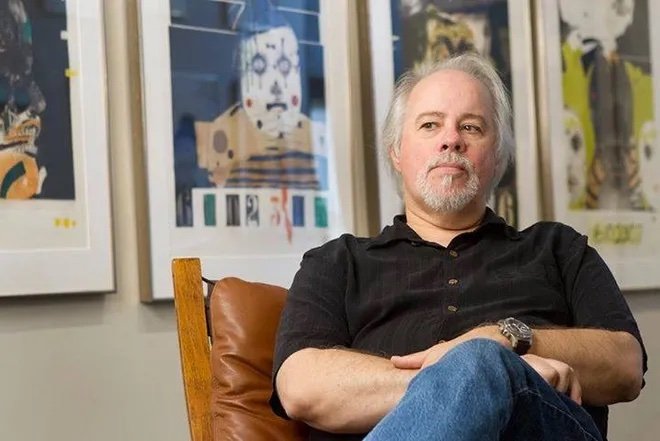Self-Portrait (1945)
Dignity is not a symbol bestowed on man, nor does the word itself possess force. Man's dignity is a force and the only modus vivendi by which man and his history survive.
- Mauricio Lasansky, 1966
Mauricio Lasansky (1914-2012) is remembered today as one of the fathers of 20th century American printmaking. During his lifetime he played a pivotal role in revitalizing graphic art mediums and establishing them as an important form of artistic expression on par with painting and sculpture.
As an artist Lasansky is best known for significantly expanding the possibilities of intaglio printmaking, a process in which an image is created on the surface of a metal plate using a range of techniques such as: etching, drypoint, aquatint, and engraving. Many of the prints in his oeuvre remain among the largest and most technically complex in existence.
Lasansky was also a teacher for most of his life - first in his native Argentina and later in Iowa where he lived for more than 65 years. At the University of Iowa in Iowa City, he developed a printmaking workshop that was ranked among the very best in the world. In 1966, Time magazine called Lasansky "the nation's most influential printmaker." During his tenure, he had the opportunity to disseminate his extensive knowledge of printmaking processes to generations of students, many of whom went on to become successful artists and professors themselves. Lasansky’s legacy as an artist-educator figures prominently in what has become known as the post-World War II renaissance of American printmaking.
Lasansky is also known worldwide for works of art that examine the brutality of Nazi Germany. Best known are The Nazi Drawings, a powerful expression of the profound disgust and outrage Lasansky felt after viewing a US Military documentary showing the victims and aftermath of Nazi atrocities. Lasansky worked intensively for six years to create the series, which consists of thirty individual pieces and one triptych. The drawings were created with pencil, water- and turpentine-based washes, and collage on common commercial paper. Since their completion in the late 1960's, The Nazi Drawings have been exhibited in many prominent art museums, and have received widespread public attention. In 1967, The Nazi Drawings, along with shows by Louise Nevelson and Andrew Wyeth, were the first exhibits installed at the new Whitney Museum of American Art in New York City. The series was featured in the exhibition Envisioning Evil, at the Minnesota Institute of Art in late 2020.
A permanent display of Lasansky's art can be seen and collected at the Lasansky Corporation Gallery in downtown Iowa City. Please contact us about availability.
